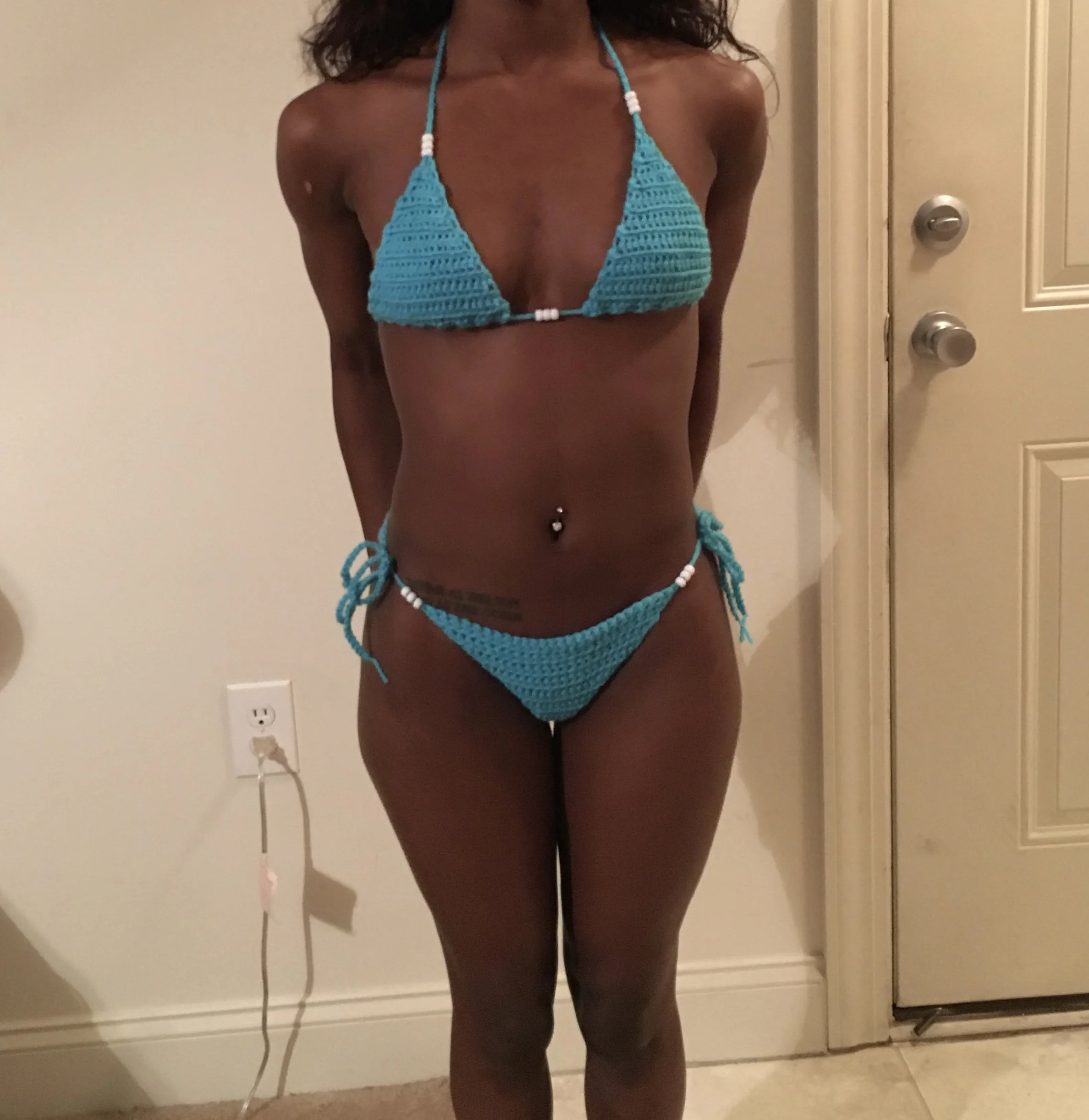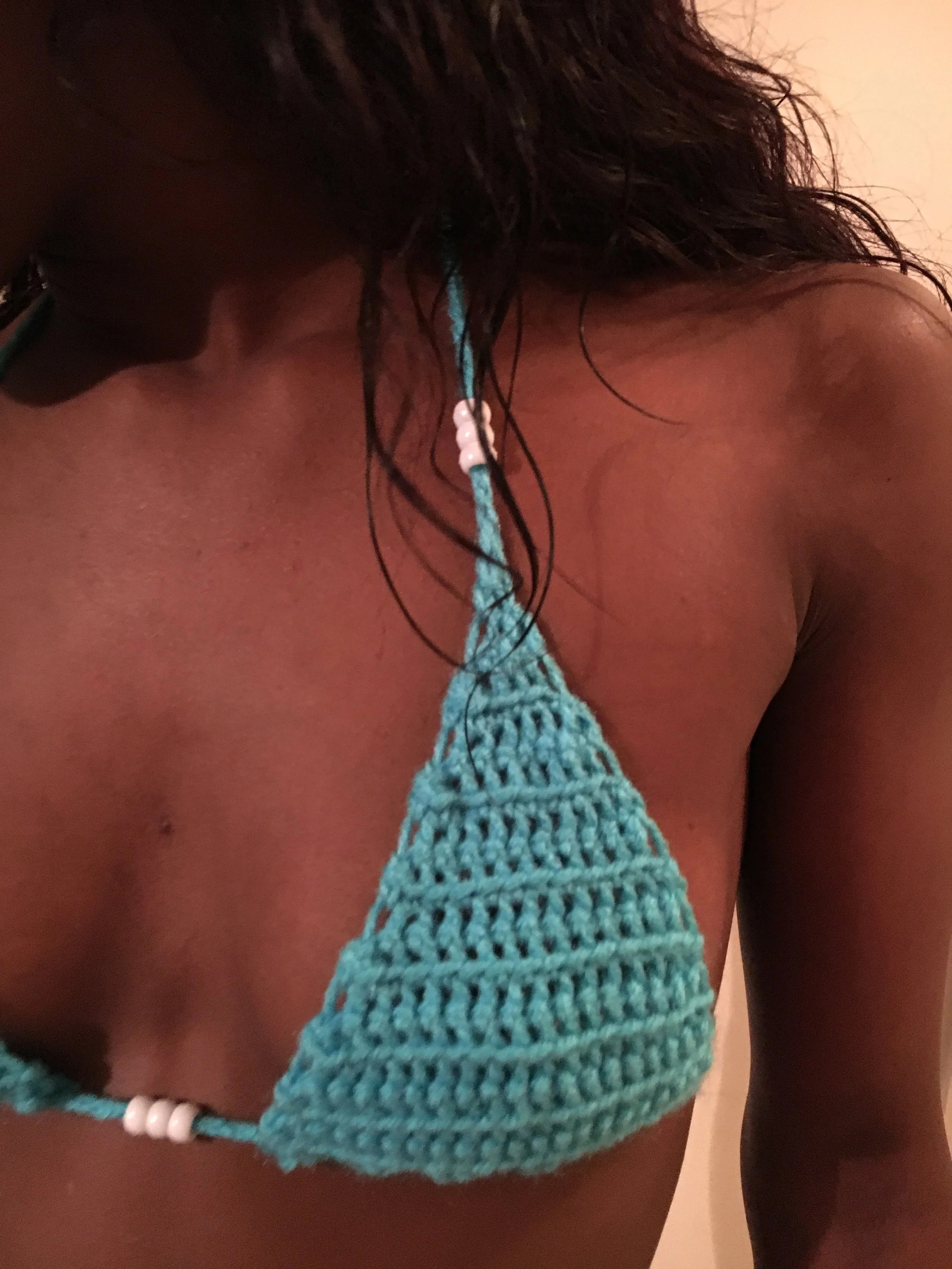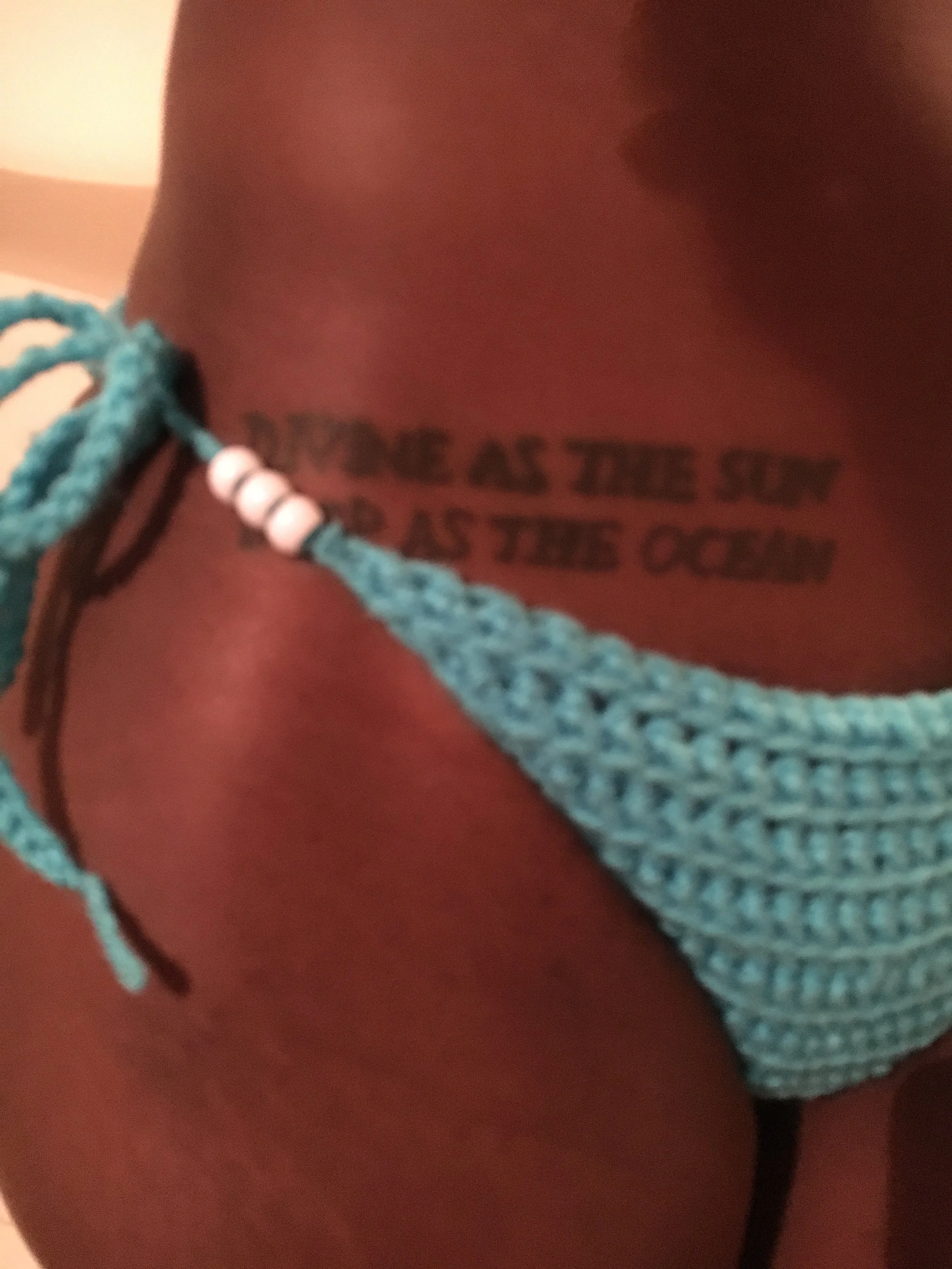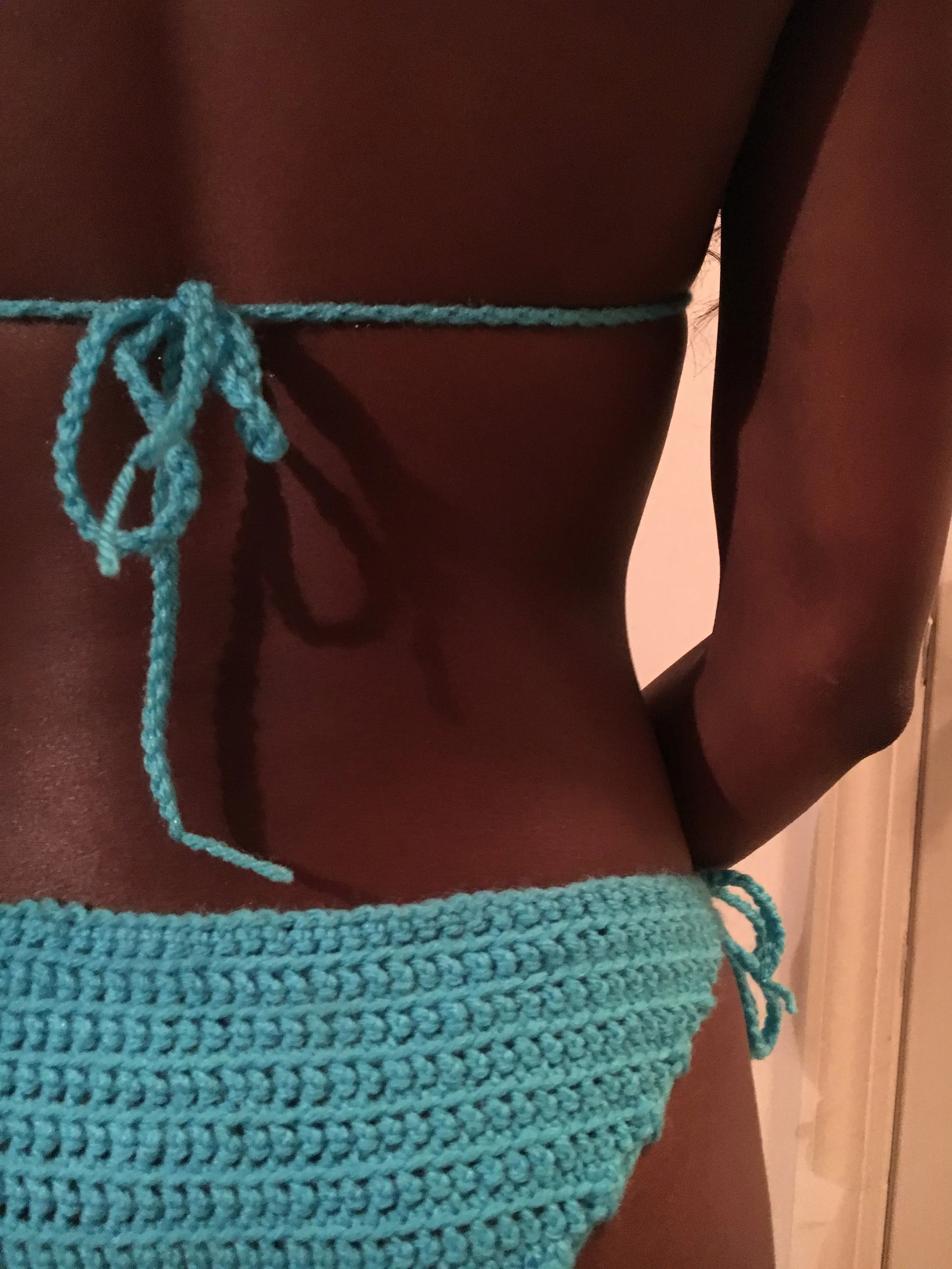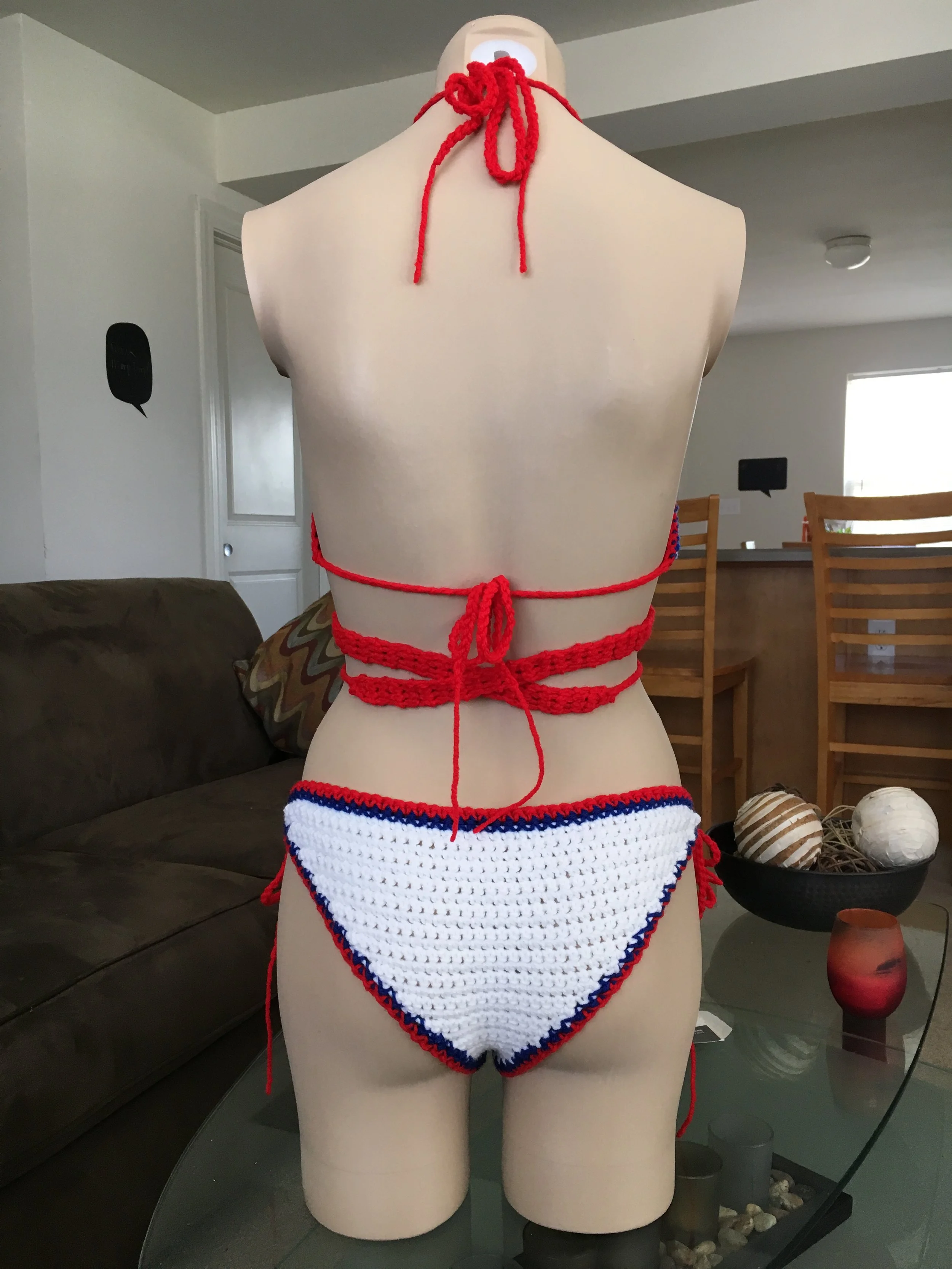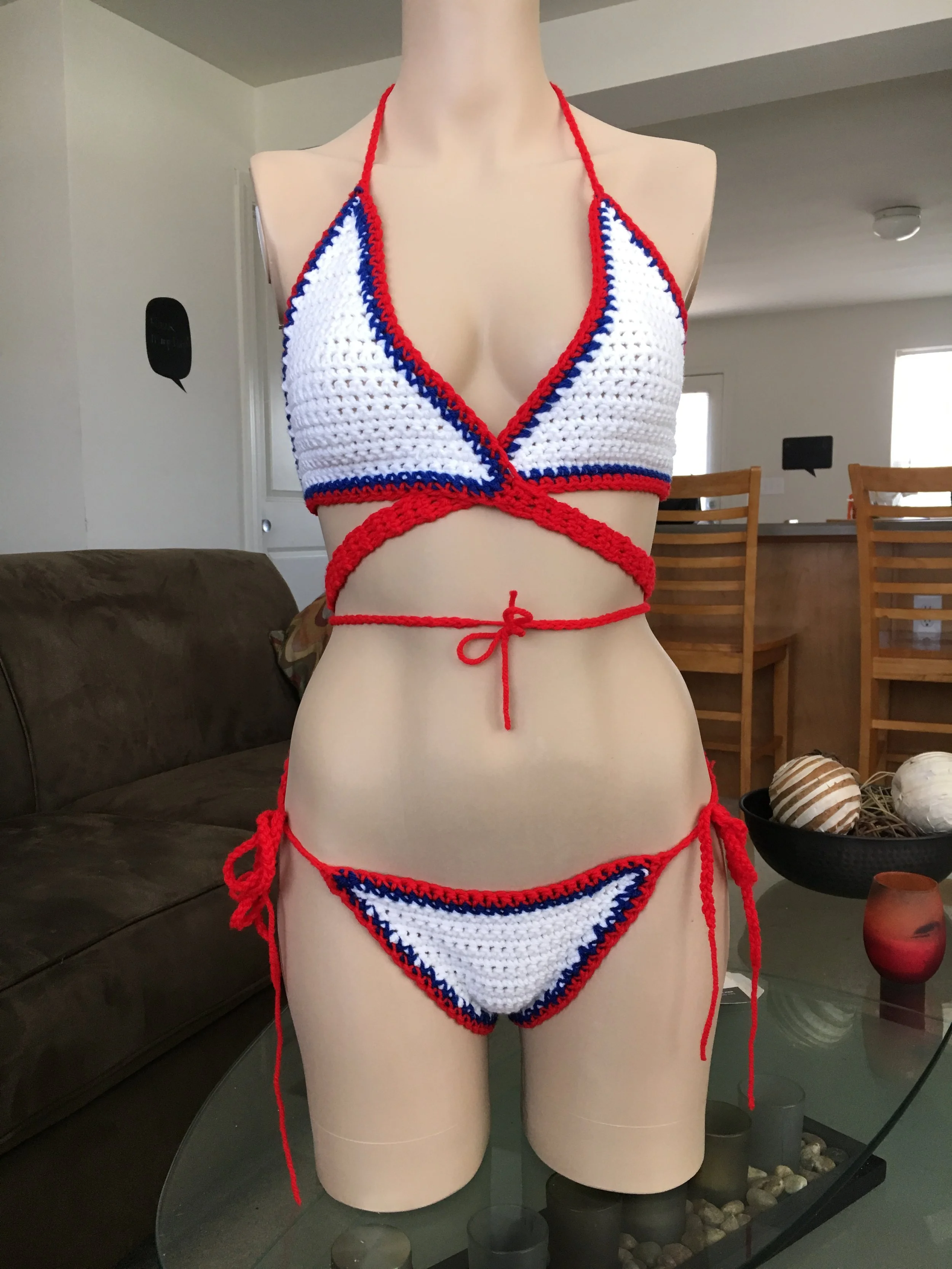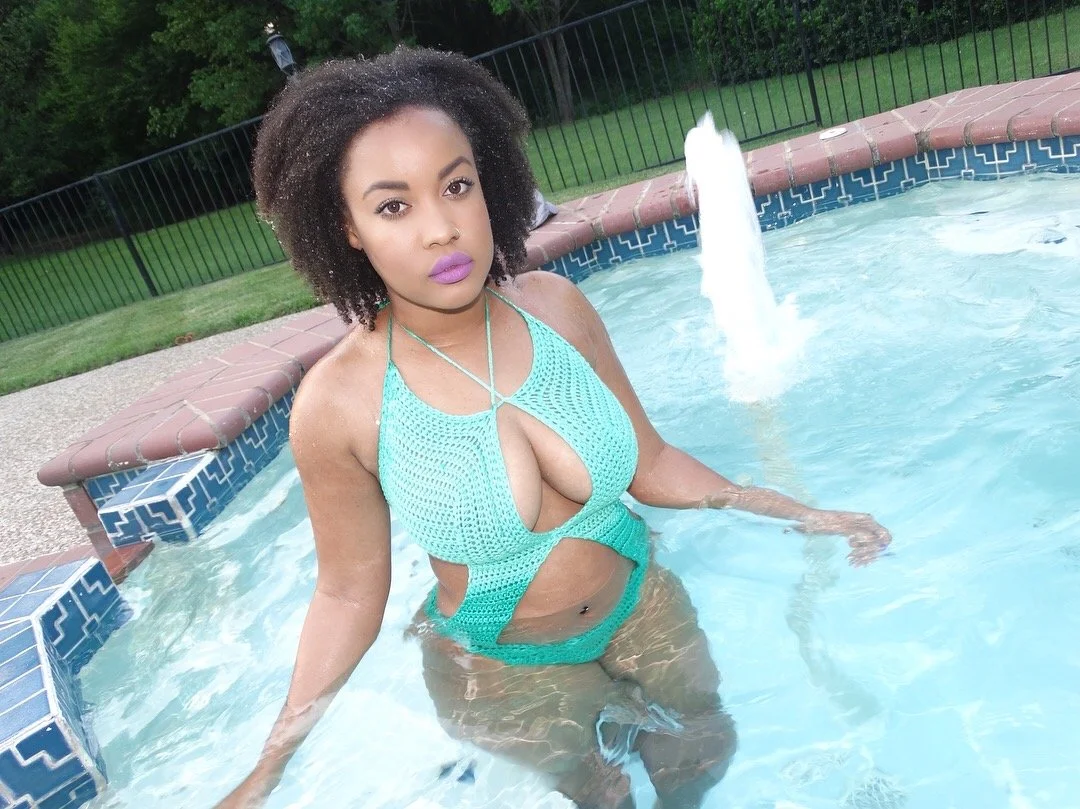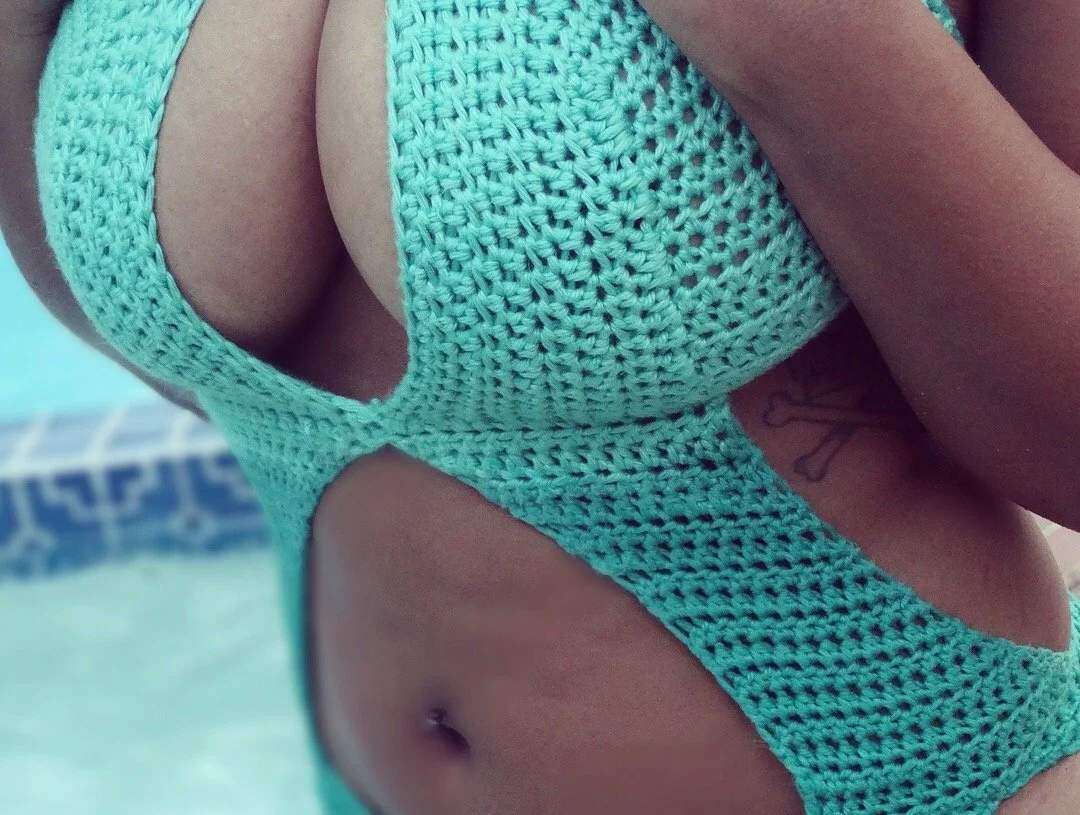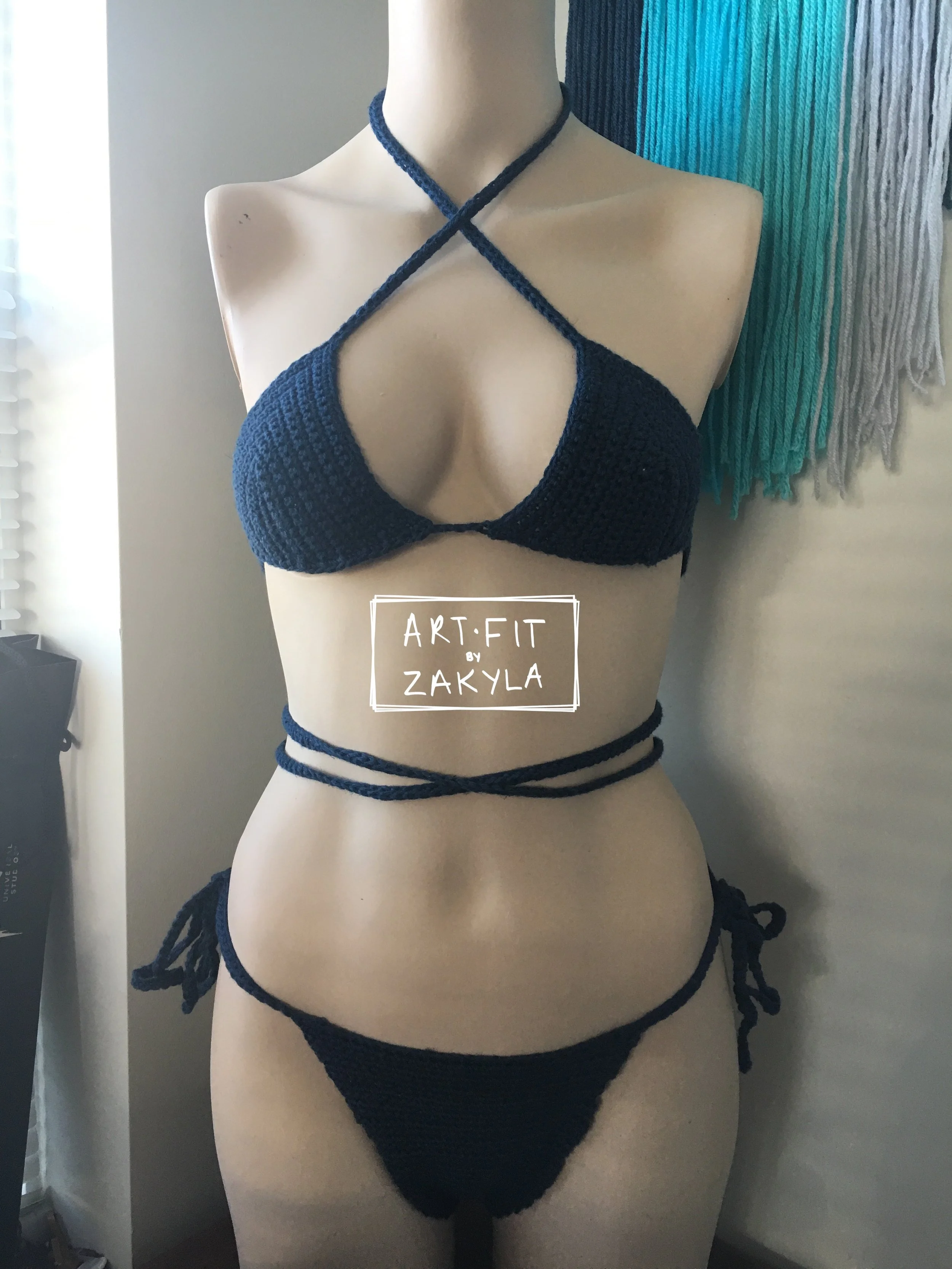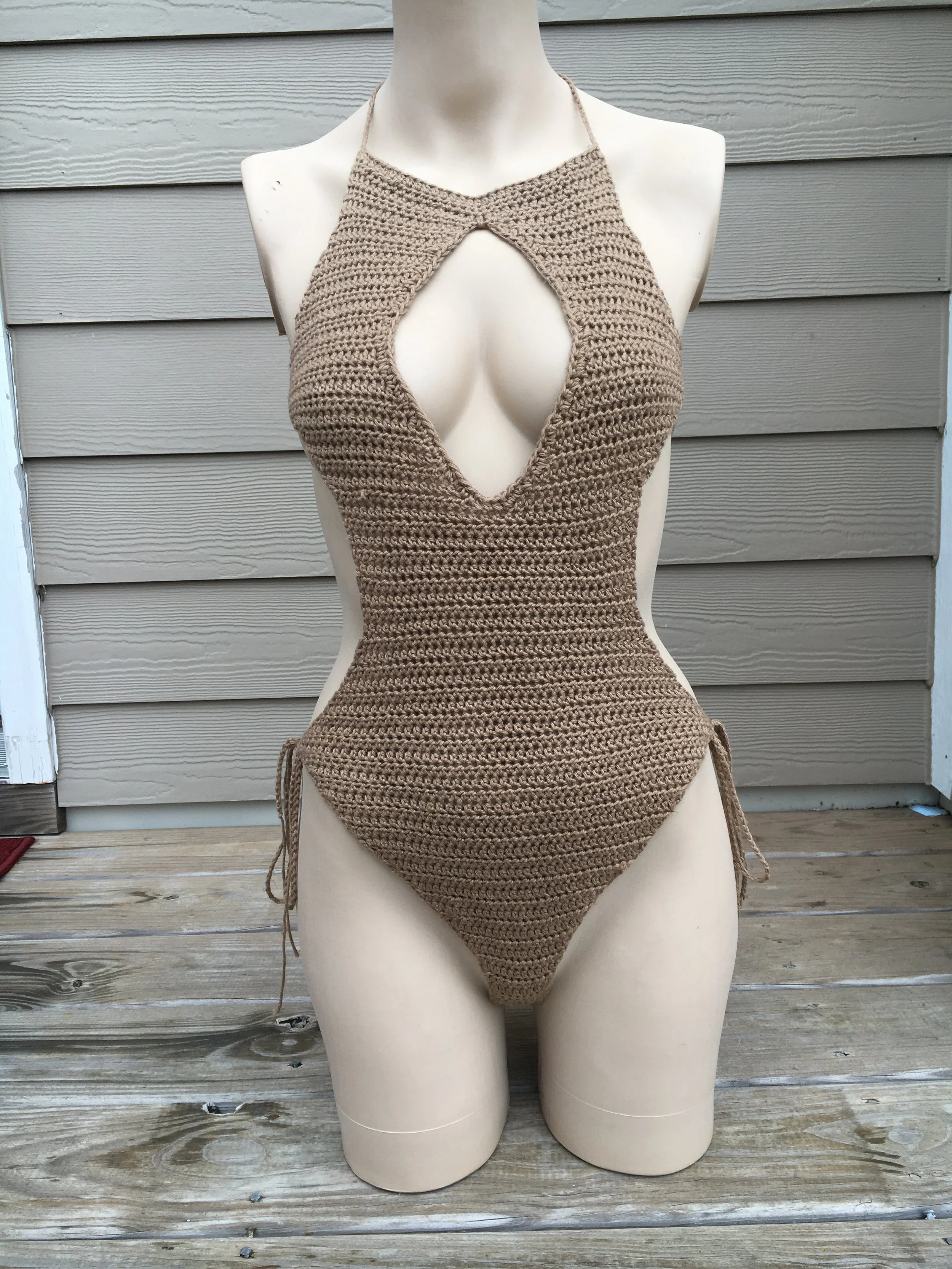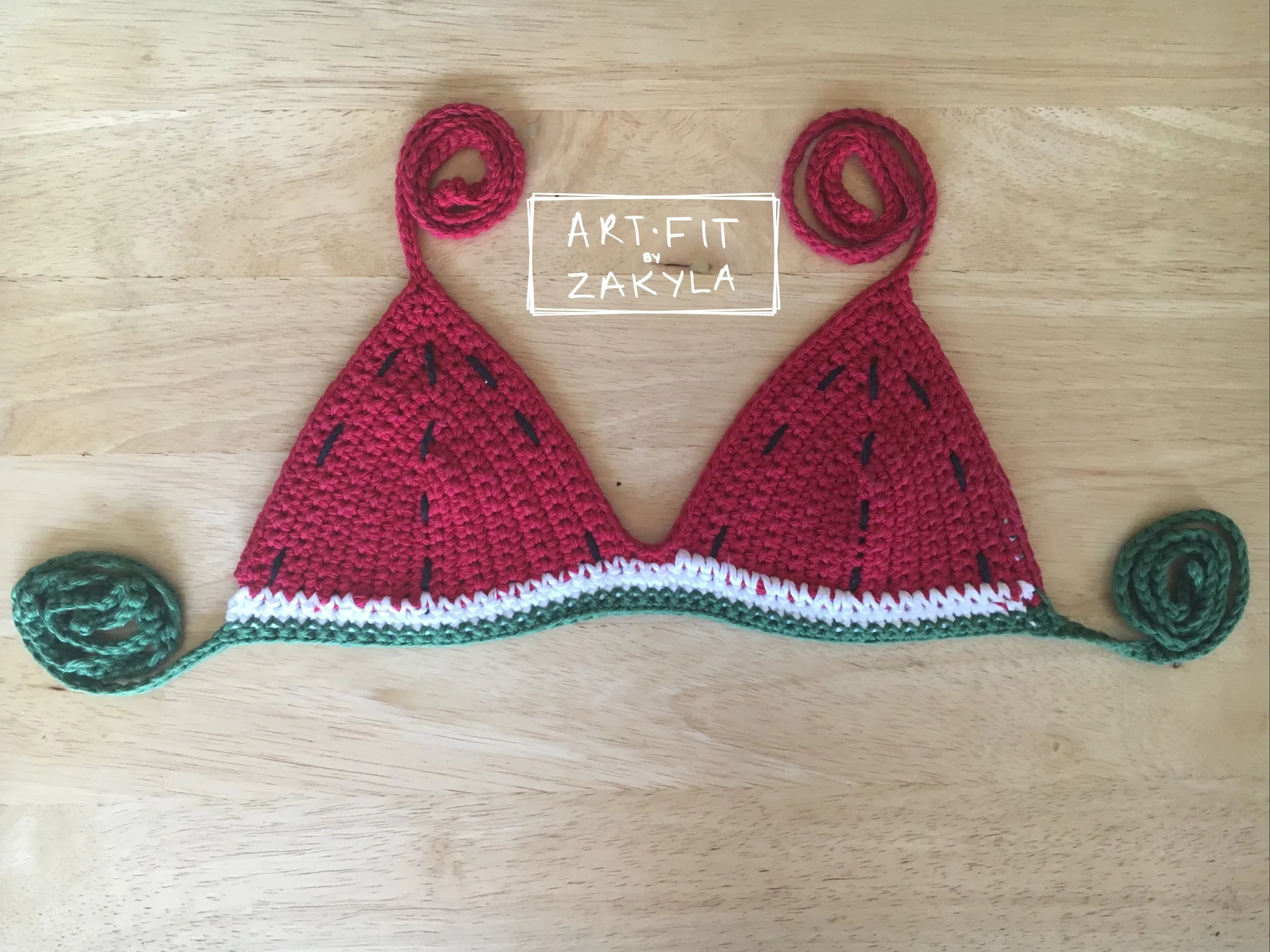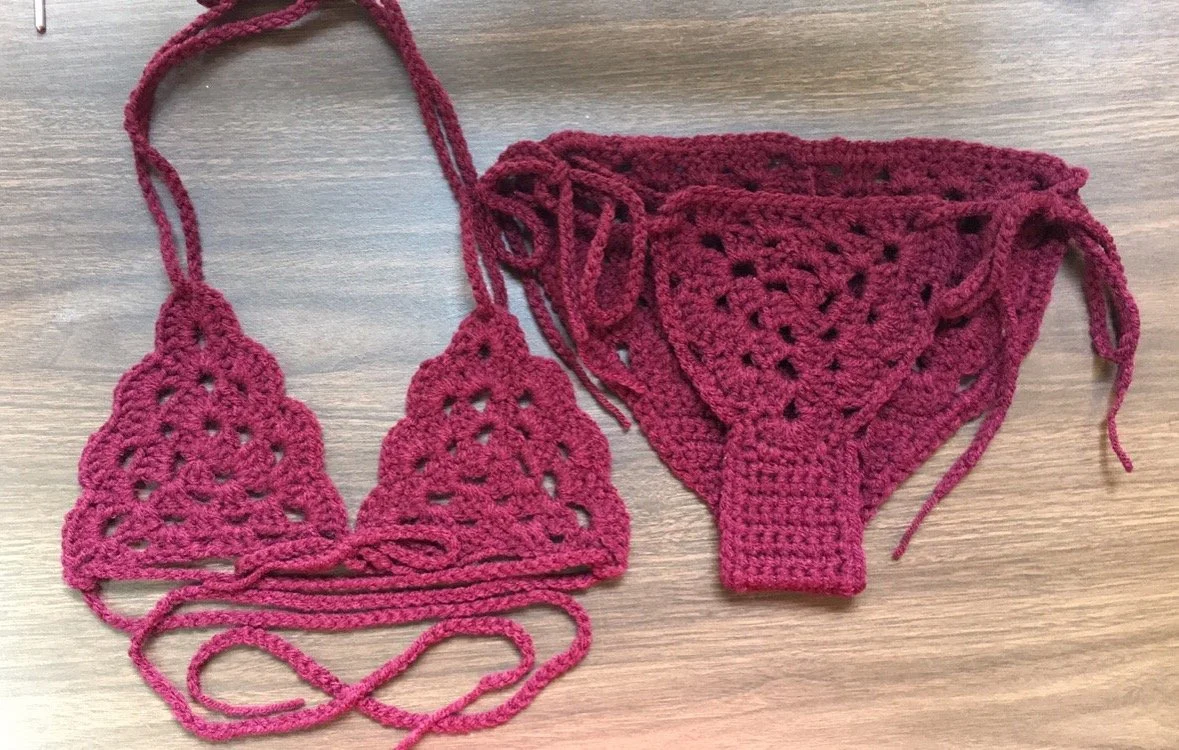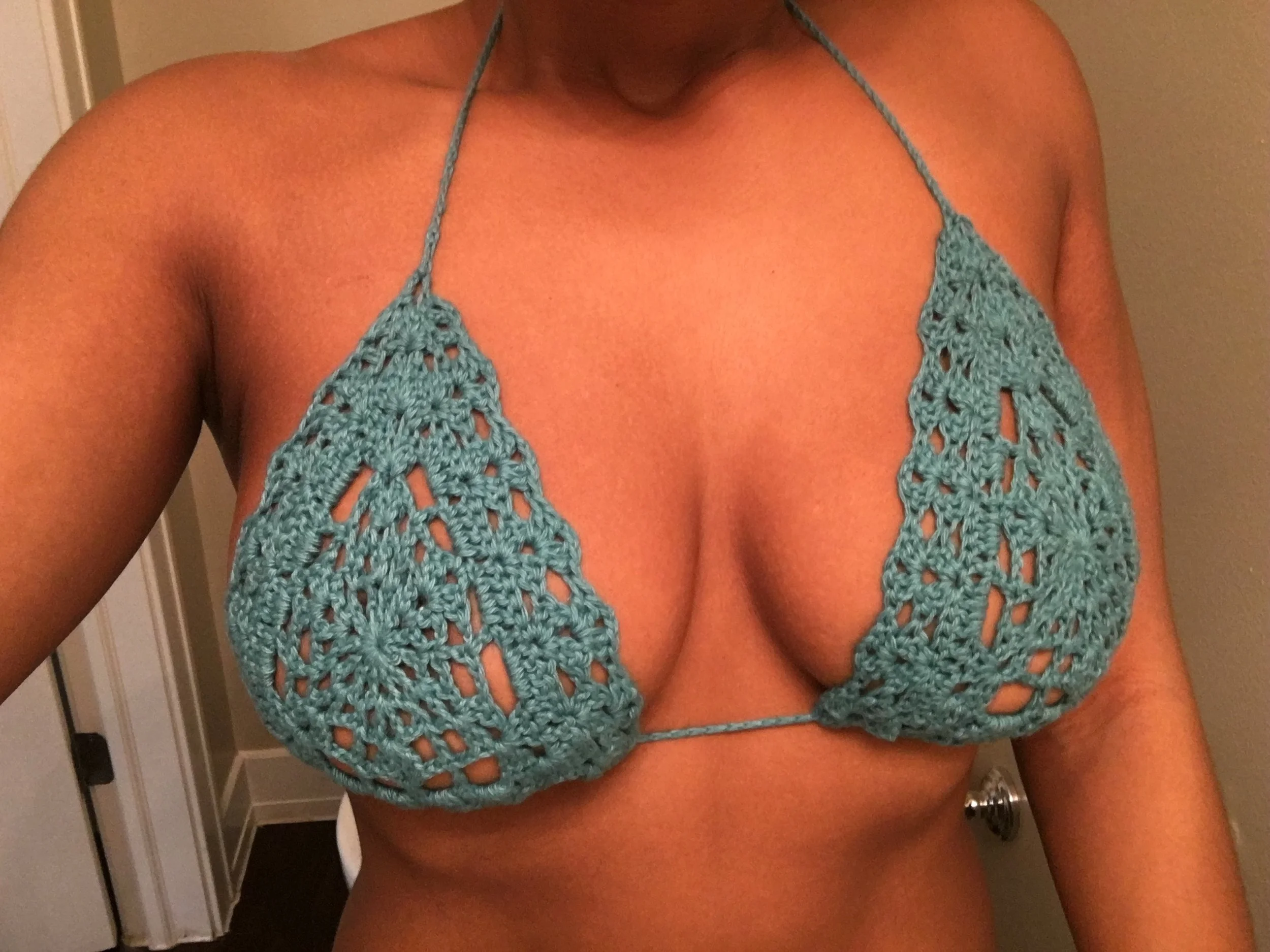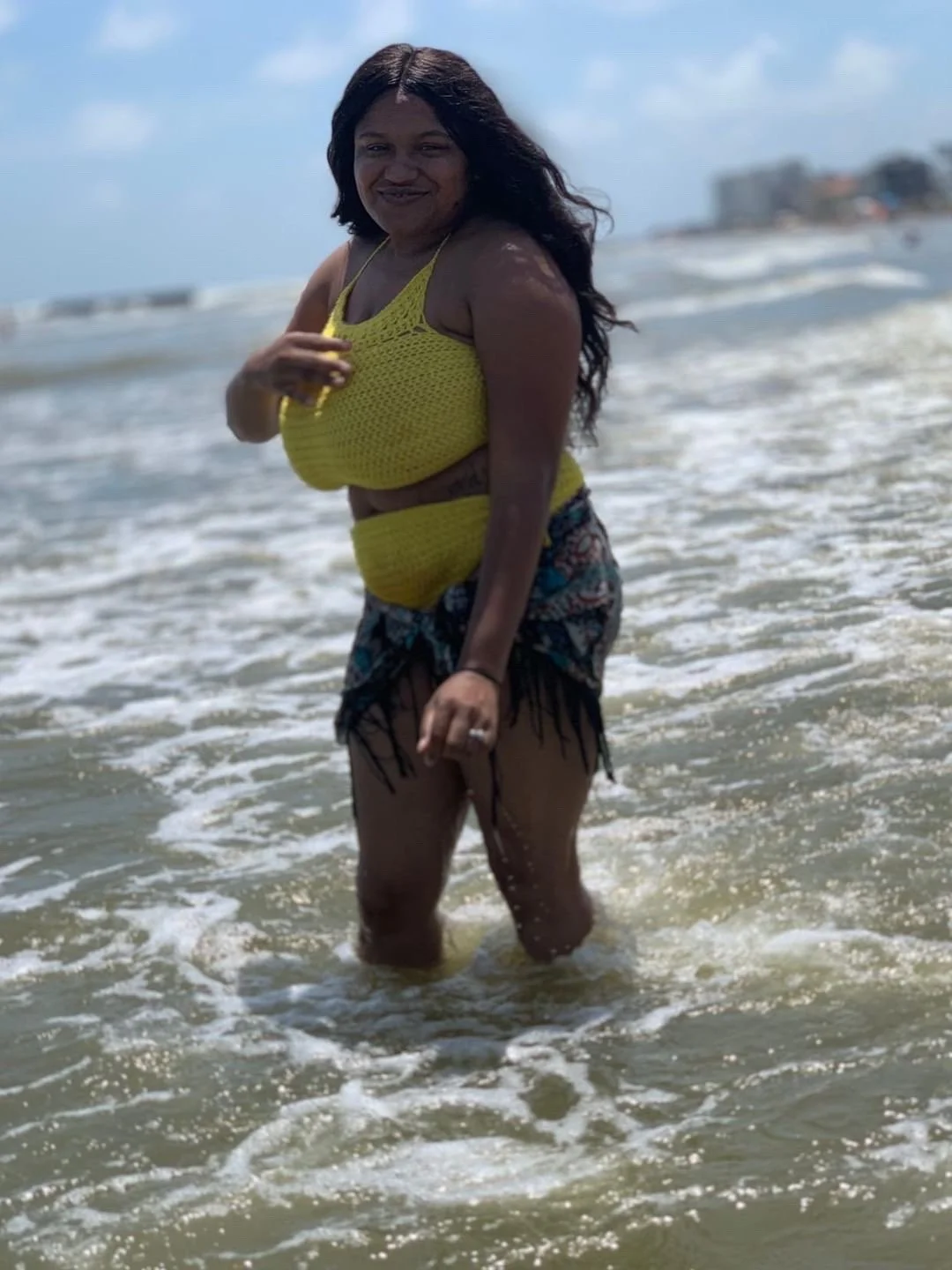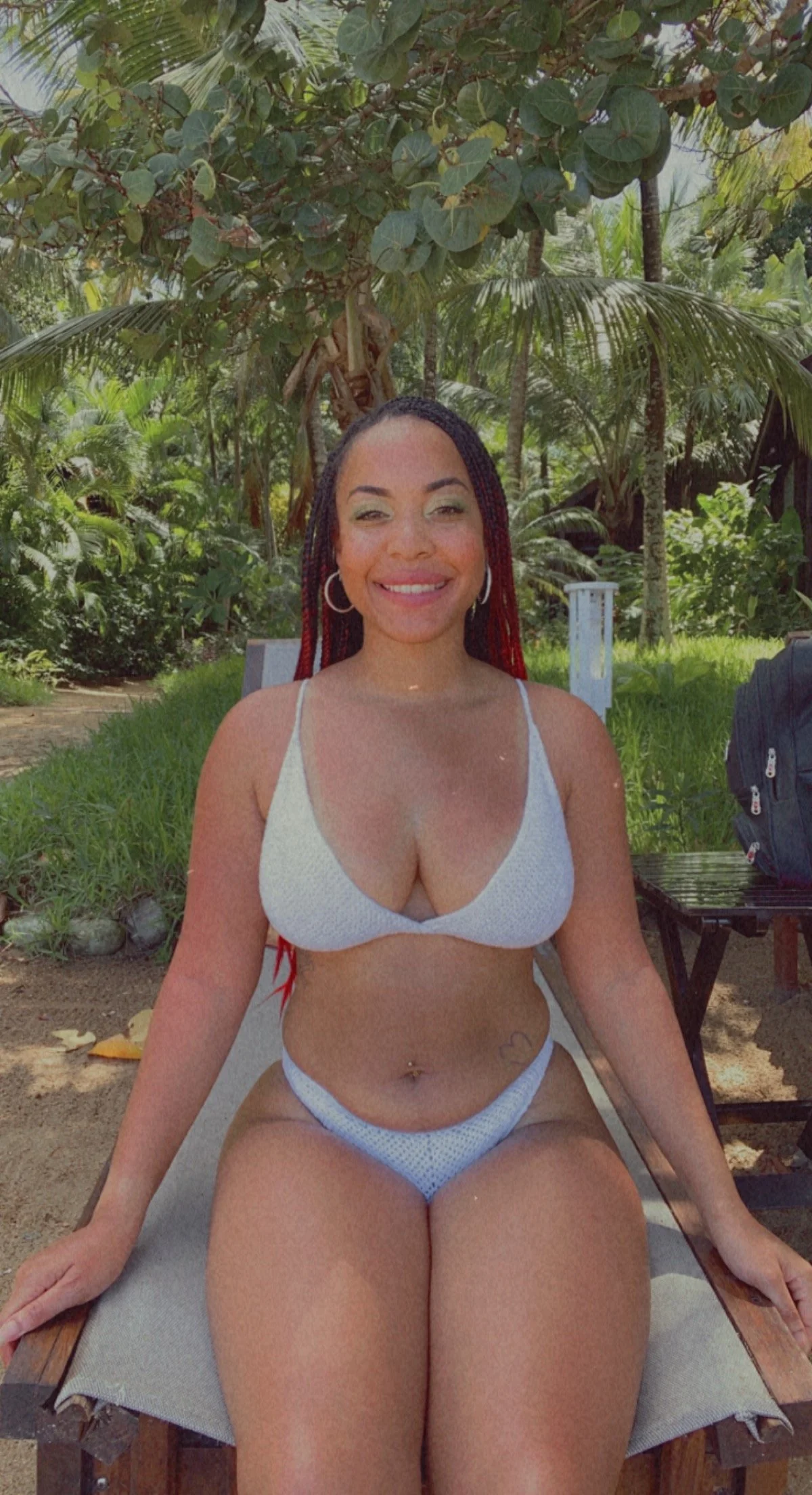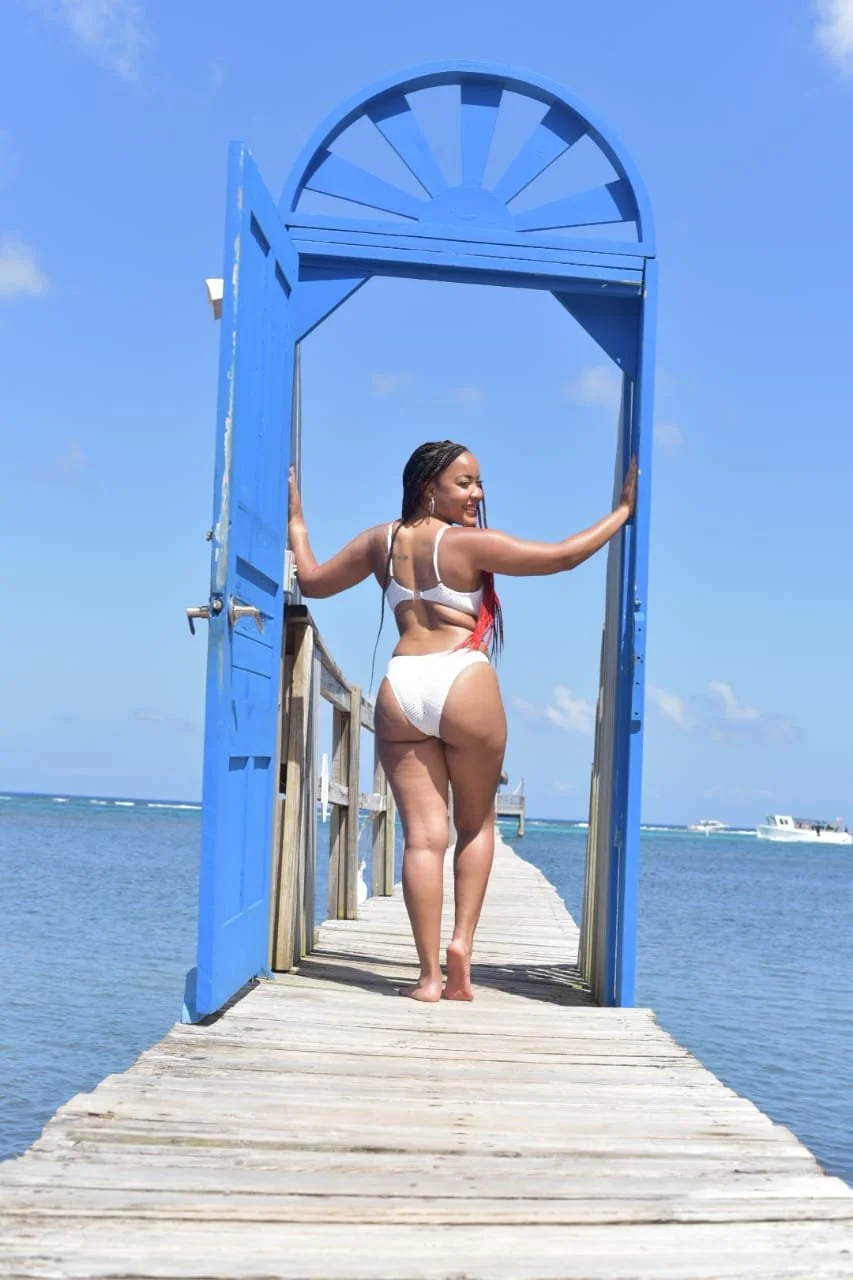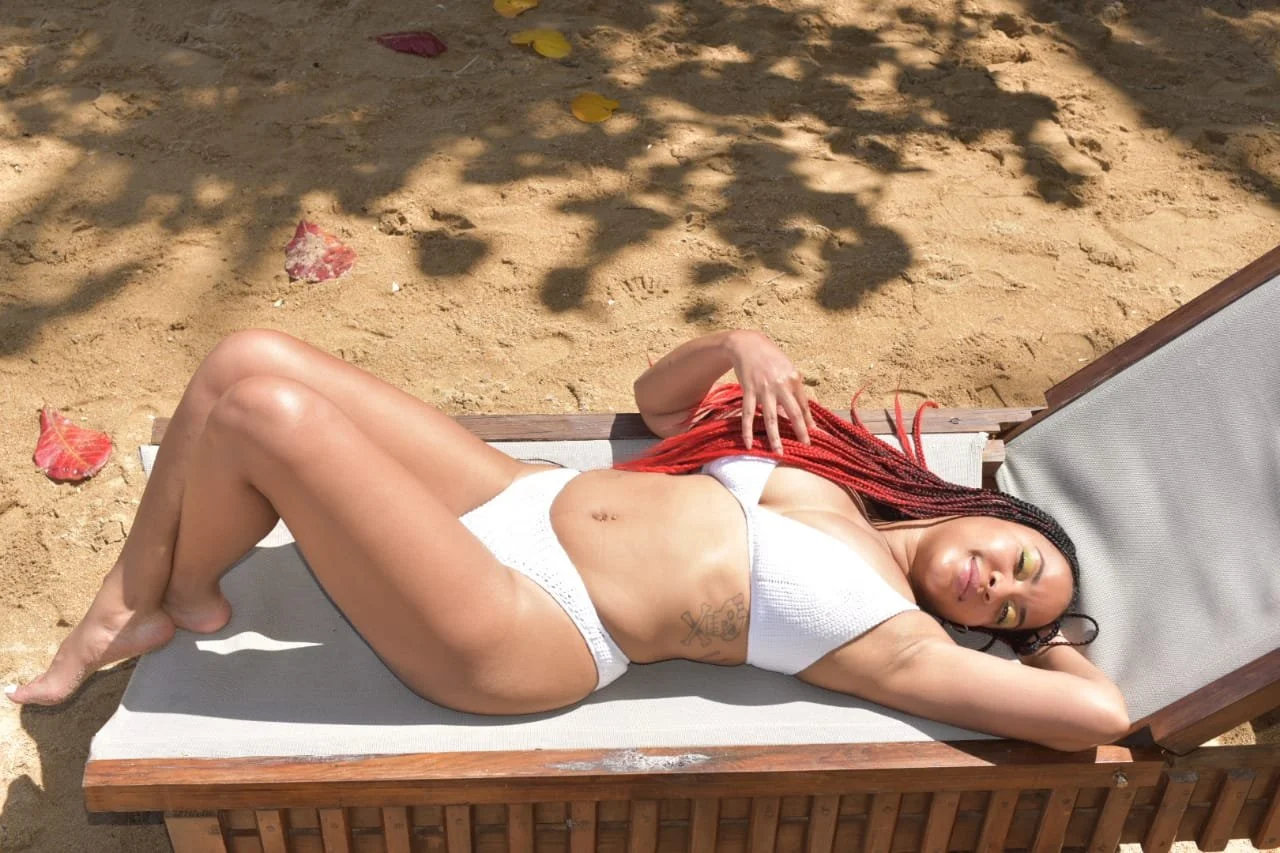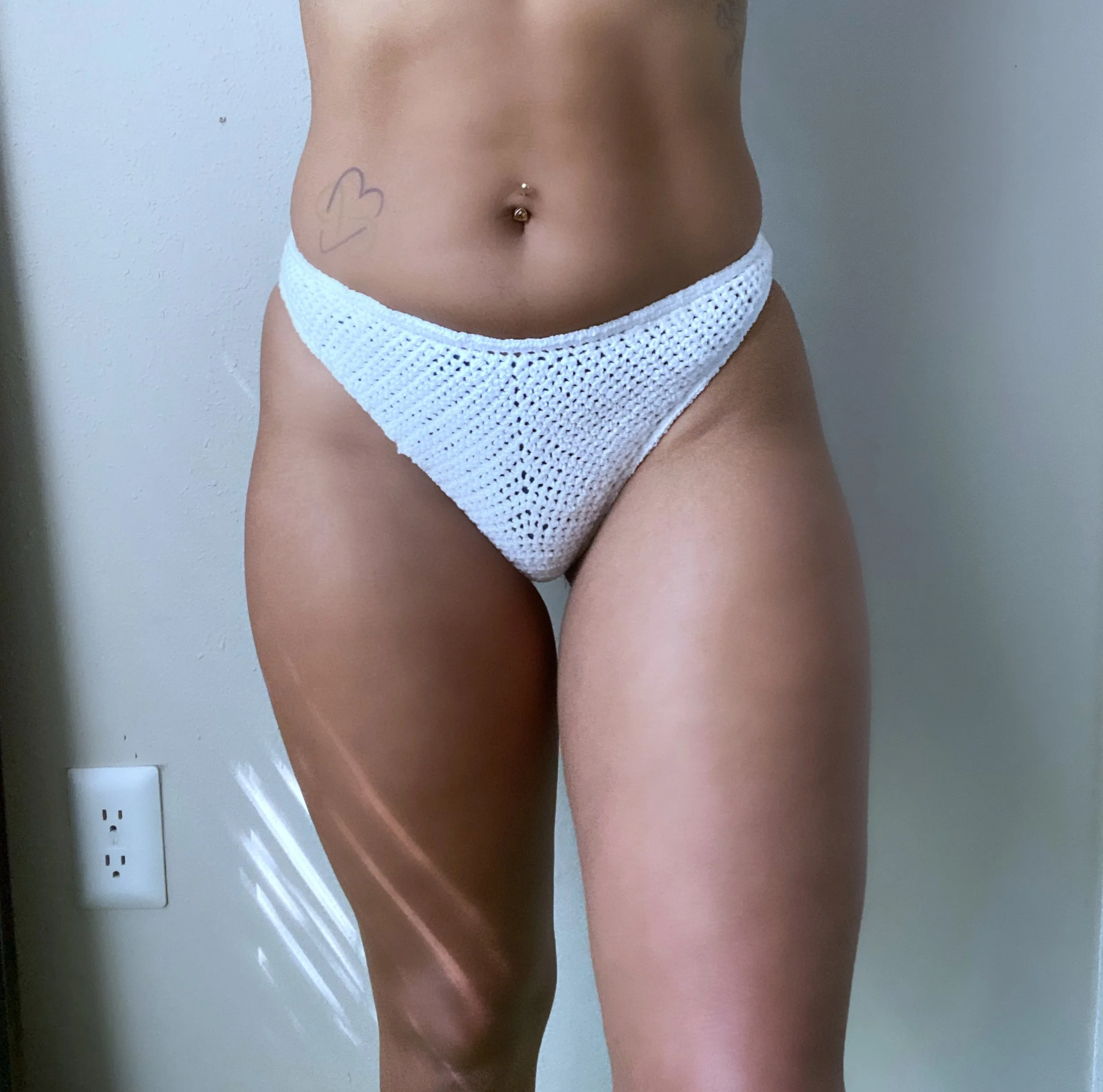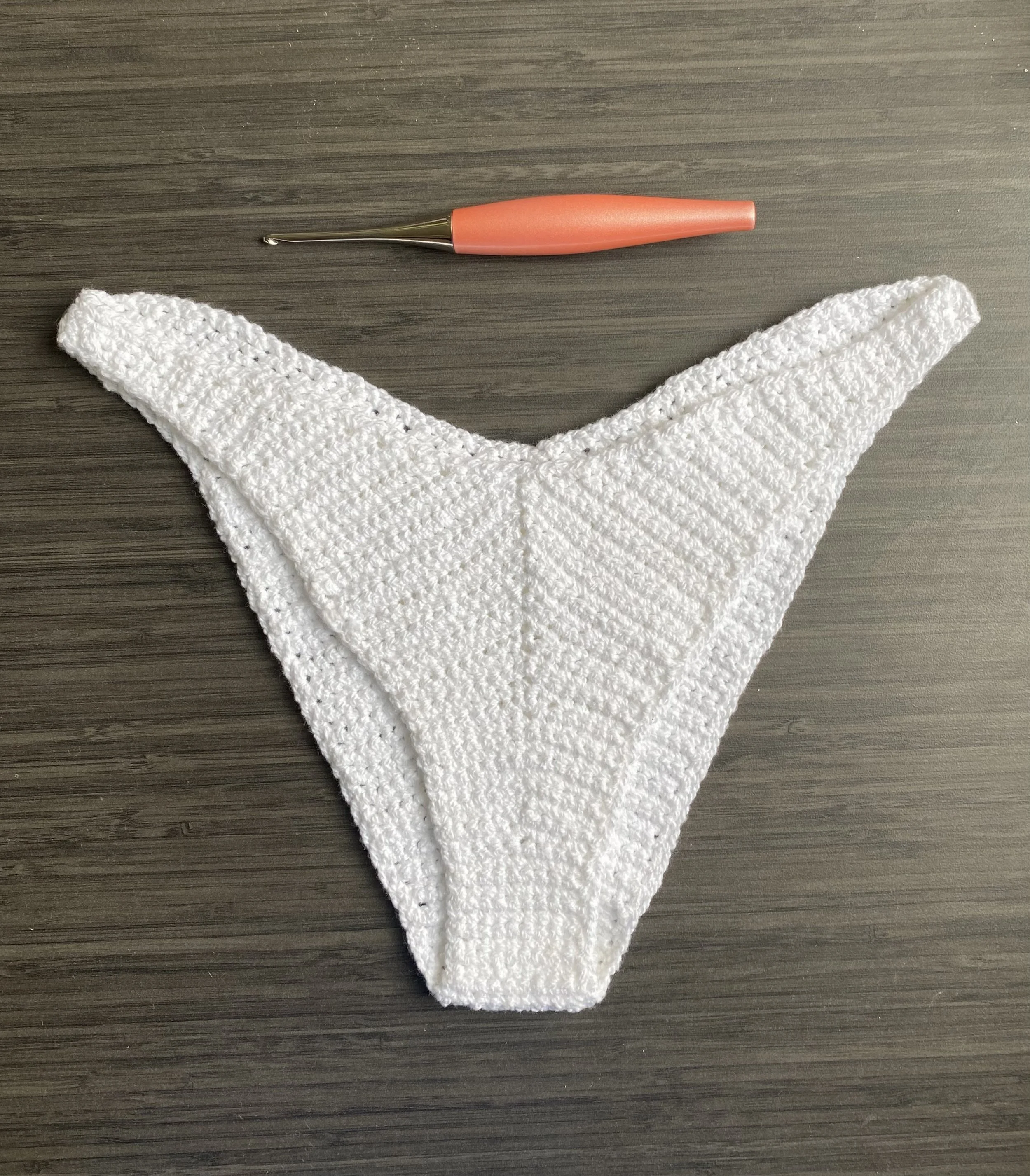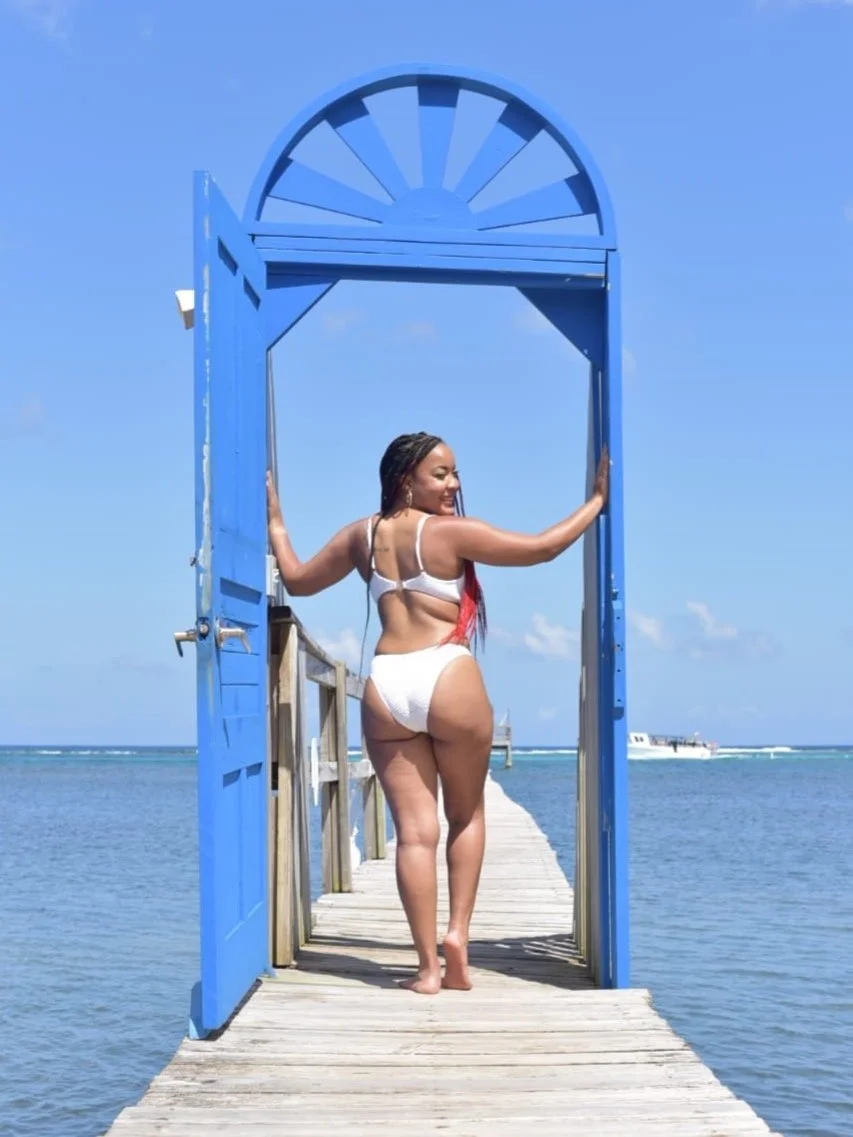Beachwear vs. Swimwear: Crochet Edition
Now, I’ll start by saying that while I may not know everything, I know enough to give you a few tips and tricks to make your Art FIT! My first ever project was a lop-sided halter top and I loved it. I knew immediately that I would make spring and summer garments. Like most people the first yarn that I had access to was Red Heart Super Saver. I mean you got so much of it at a low price and it came in so many colors how could you not get hooked on buying it?
But that meant that the garments I’d be making for spring and summer would essentially be made out of plastic. Acrylic yarn is not as breathable as some other fibers and in my opinion, definitely should not be worn in water. Cotton is a strong fiber but can be super absorbent and can take a long time to dry. Once it gets wet it can become very heavy and cause the garment to sag. No one wants diaper butt at the pool. But I say all that and still suggest that you use what you got but be aware of how the fiber will respond in different environments.
Top row bikini is made with red heart yarn. White bikini made with acrylic yarn (I think, it’s been many years). Blue-green variegated yarn is 100% cotton, but worsted weight. Green monokini made with cotton blend. I believe it was Knit Picks Shine Worsted. Navy bikini made with cotton yarn. Tan monokini made with cotton linen blend. I think it was a DK weight. Watermelon top made with 100% cotton. Maroon bikini made with acrylic. Blue top made with 100% cotton and it was a sport weight. Yellow bikini made with Knit Picks Shine.
So what’s the difference between the two?
Swimwear should be able to get wet and not take all day to dry. Typically beachwear is better suited for laying out to tan or attending a festival. I think often these words are used interchangeably in the crochet community. Plus bikinis and swimwear are so quick and easy to make.
So here are a few tips and tricks I think are very helpful when starting out crocheting your own swimwear and beachwear.
USE ELASTIC OR A YARN THAT HAS ELASTIC IN IT.
Especially if you are going to be wearing it in the water. There is yarn that is specifically made for swimwear like Alize Diva Stretch and Ice Yarn Swim. One that I find comfy is Cascade Cotton Fixation (shown below).
CHOOSE A LIGHTWEIGHT YARN.
Choose a nice breathable fiber. Don’t be afraid to do a wear test. Worsted weight acrylic while cost effective is stiff. If you need to use acrylic choose a sport weight. I prefer to use sport weight yarn and a single or half double crochet.
USE THE SAME NOTIONS THAT ACTUAL SWIMSUITS USE.
I’ve used oval rings, sliders, and clasps to add more support. These can be purchased in large quantities but in limited colors. They can be metal or plastic. I’ve used plastic. To find more of these google search “hardware for sewing bras.”
For the white bikini I single crocheted around a thin elastic cord along all the edges of the bottoms and at the bottom of the cups for the bikini top. I used a plastic clasp for the back and a ring and slider set for the straps. I am what people would consider “heavy chested” so the tradition bikini ties just don’t offer enough support for me. This yarn is Cascade Fixation and already has a small amount of elastic in the yarn. Adding the elastic forces the edges of the project to sit against the body and stay in place when moving in and out of water. Both the top and bottom and were constructed using single crochet stitches!
I hope this information was helpful!
This is The Blue Door in Roatan, Honduras.

